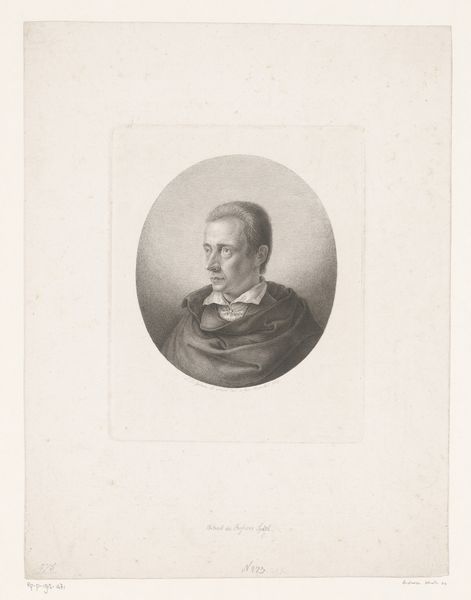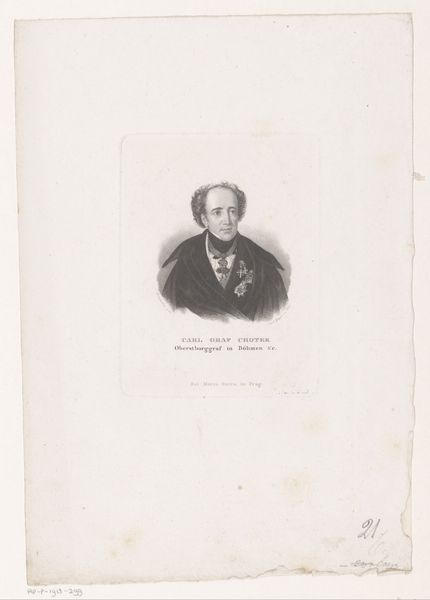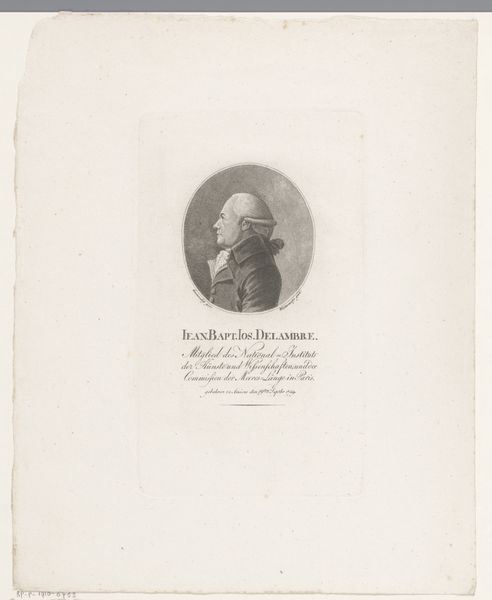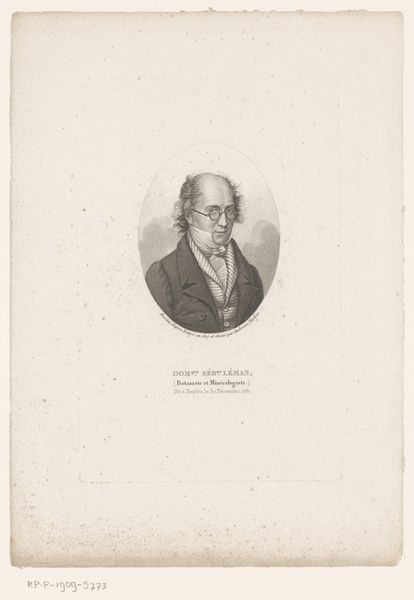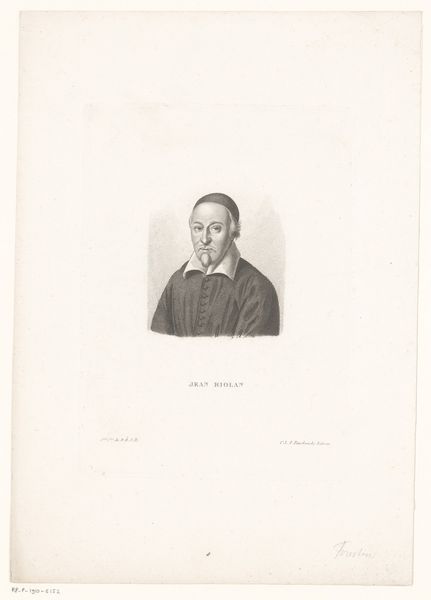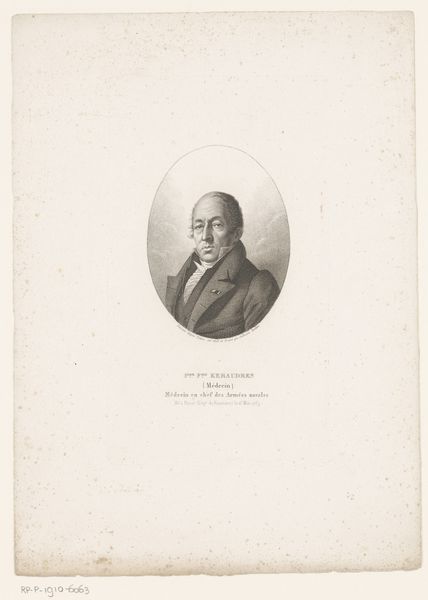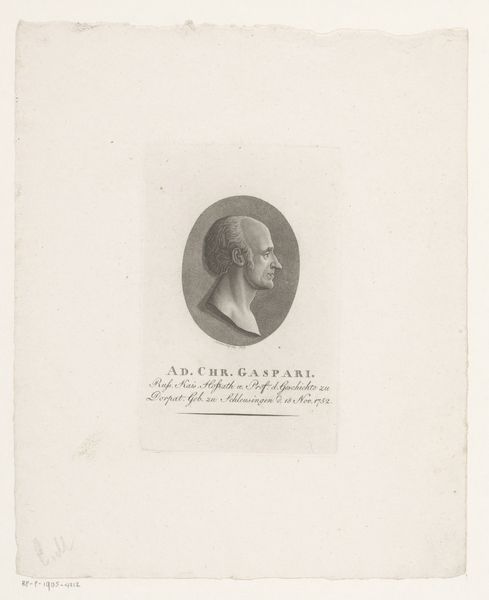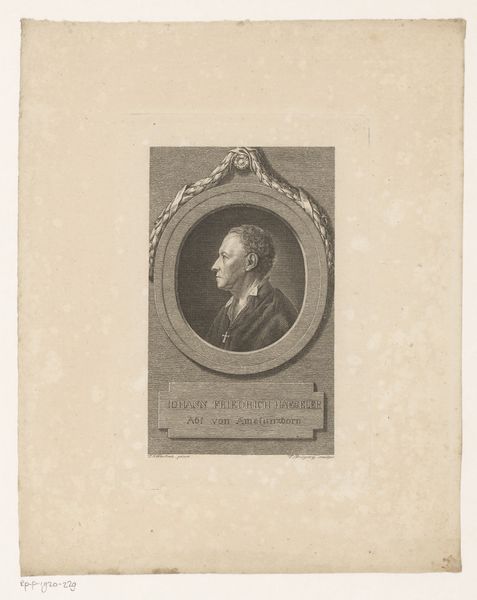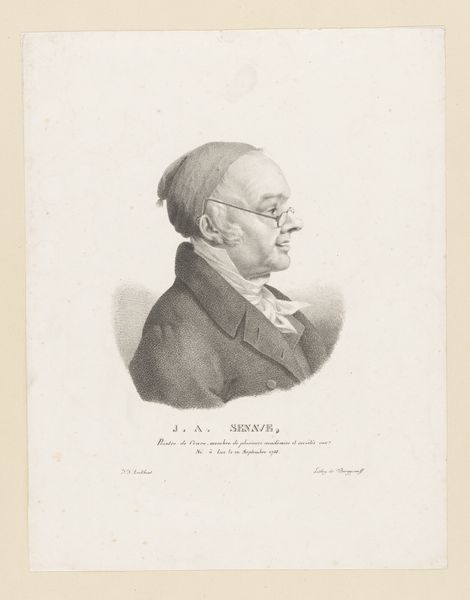
print, paper, engraving
#
portrait
# print
#
paper
#
engraving
#
realism
Dimensions: height 290 mm, width 217 mm
Copyright: Rijks Museum: Open Domain
Curator: This engraving, made in 1822 by L. Lorin, presents a portrait of Dr. Franz Xaver Schwediauer. It’s a realistic print, primarily in shades of gray. Editor: It strikes me as rather somber. The oval frame almost seems to imprison the subject, and the cool tones add to a feeling of melancholy. Is this a common style for portraits of this period? Curator: Portrait engravings were relatively common due to their reproducibility and accessibility. They served as a visual record of important figures within society. This one would have certainly circulated amongst Schwediauer’s colleagues, patients, or possibly even a broader educated public. Editor: Right. It is also impossible not to consider how this image plays into existing power structures; whose stories and faces were deemed worthy to record, reproduce and disseminate, and what message that conveys in relation to those erased and othered. Also, I can't help but feel there's a vulnerability in his eyes, yet his crossed hands project authority. How do you interpret that juxtaposition? Curator: It's fascinating you mention the hands, I also noted them! Cross armed, this pose conveys authority and suggests the seriousness of his profession. At that time doctors often acquired a reputation built on solid knowledge and trust. That detail serves the function of conveying and cementing that persona. Editor: So the portrait contributes to building a certain kind of image, then; presenting him as both learned, powerful and in control; I think that by today’s standards, there could be multiple interpretations on what that control or ‘power’ implies, from a socio-historical perspective, don’t you agree? Curator: Indeed. It highlights the complexities of representing individuals, particularly those in positions of power, within the specific context of 19th-century society. Editor: Well, engaging with this print certainly reminded me that art from any era reflects specific social power structures and considerations. Curator: It does. Reflecting on that is crucial as we attempt to extract meanings from visual and material culture that go far beyond mere documentation.
Comments
No comments
Be the first to comment and join the conversation on the ultimate creative platform.

